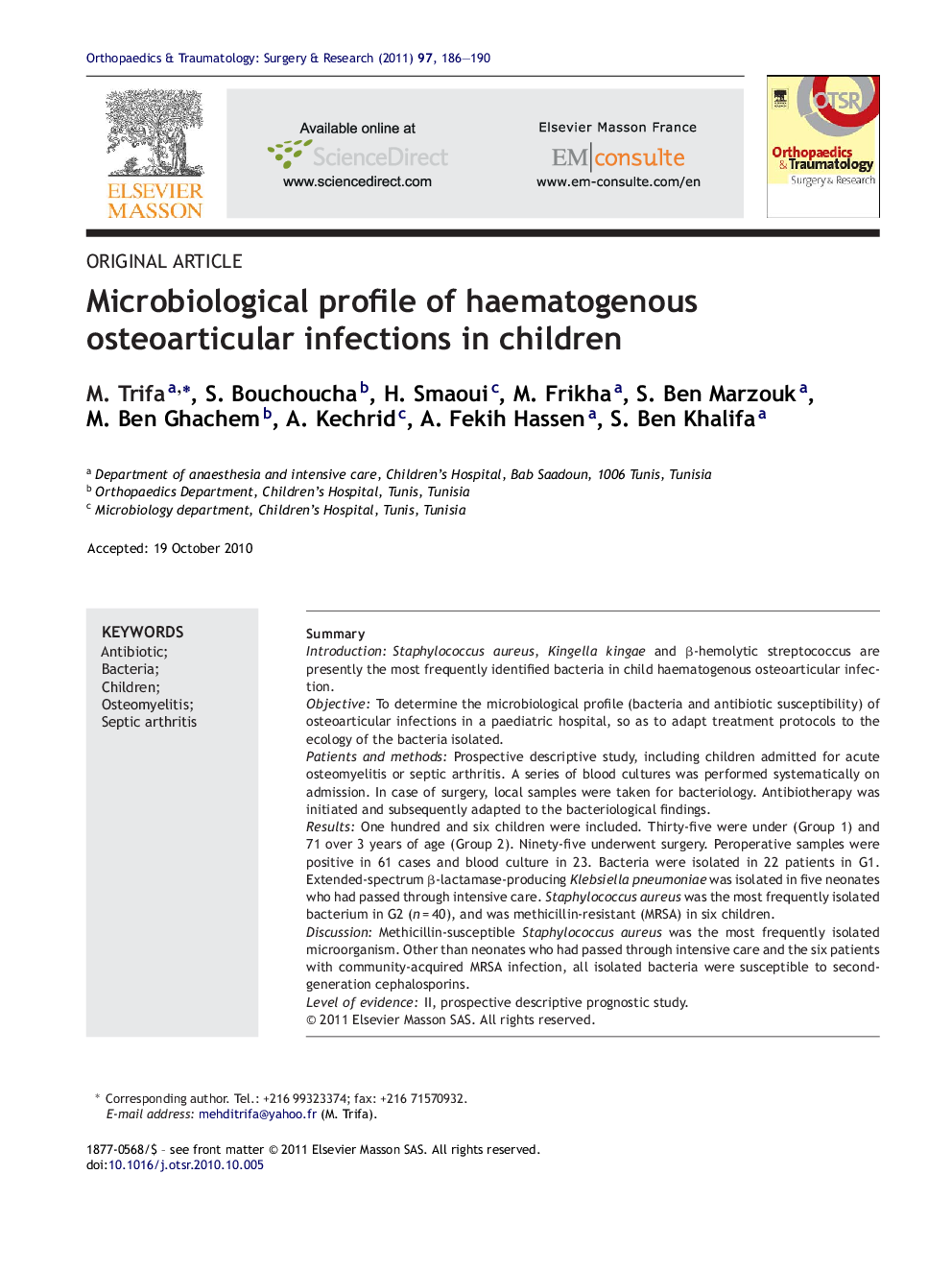| Article ID | Journal | Published Year | Pages | File Type |
|---|---|---|---|---|
| 4082084 | Orthopaedics & Traumatology: Surgery & Research | 2011 | 5 Pages |
SummaryIntroductionStaphylococcus aureus, Kingella kingae and β-hemolytic streptococcus are presently the most frequently identified bacteria in child haematogenous osteoarticular infection.ObjectiveTo determine the microbiological profile (bacteria and antibiotic susceptibility) of osteoarticular infections in a paediatric hospital, so as to adapt treatment protocols to the ecology of the bacteria isolated.Patients and methodsProspective descriptive study, including children admitted for acute osteomyelitis or septic arthritis. A series of blood cultures was performed systematically on admission. In case of surgery, local samples were taken for bacteriology. Antibiotherapy was initiated and subsequently adapted to the bacteriological findings.ResultsOne hundred and six children were included. Thirty-five were under (Group 1) and 71 over 3 years of age (Group 2). Ninety-five underwent surgery. Peroperative samples were positive in 61 cases and blood culture in 23. Bacteria were isolated in 22 patients in G1. Extended-spectrum β-lactamase-producing Klebsiella pneumoniae was isolated in five neonates who had passed through intensive care. Staphylococcus aureus was the most frequently isolated bacterium in G2 (n = 40), and was methicillin-resistant (MRSA) in six children.DiscussionMethicillin-susceptible Staphylococcus aureus was the most frequently isolated microorganism. Other than neonates who had passed through intensive care and the six patients with community-acquired MRSA infection, all isolated bacteria were susceptible to second-generation cephalosporins.Level of evidenceII, prospective descriptive prognostic study.
